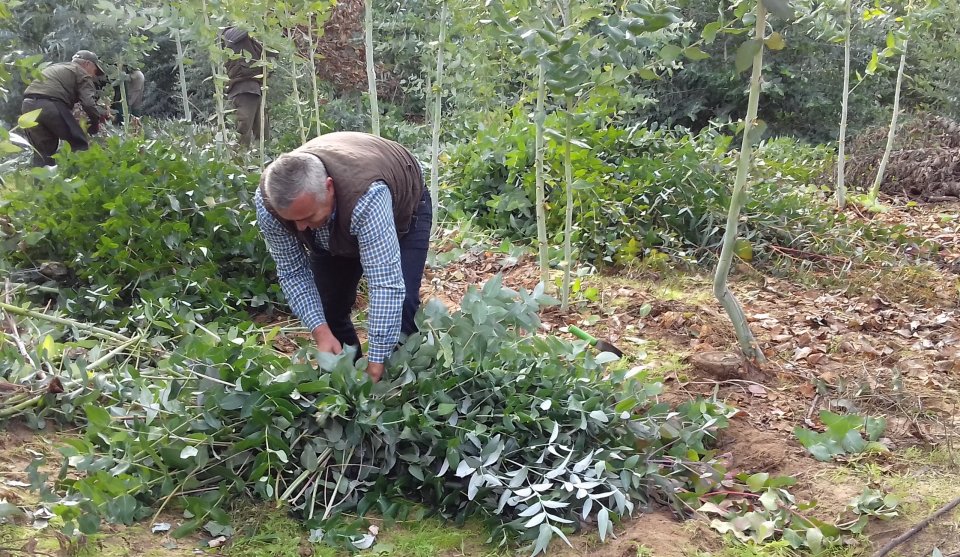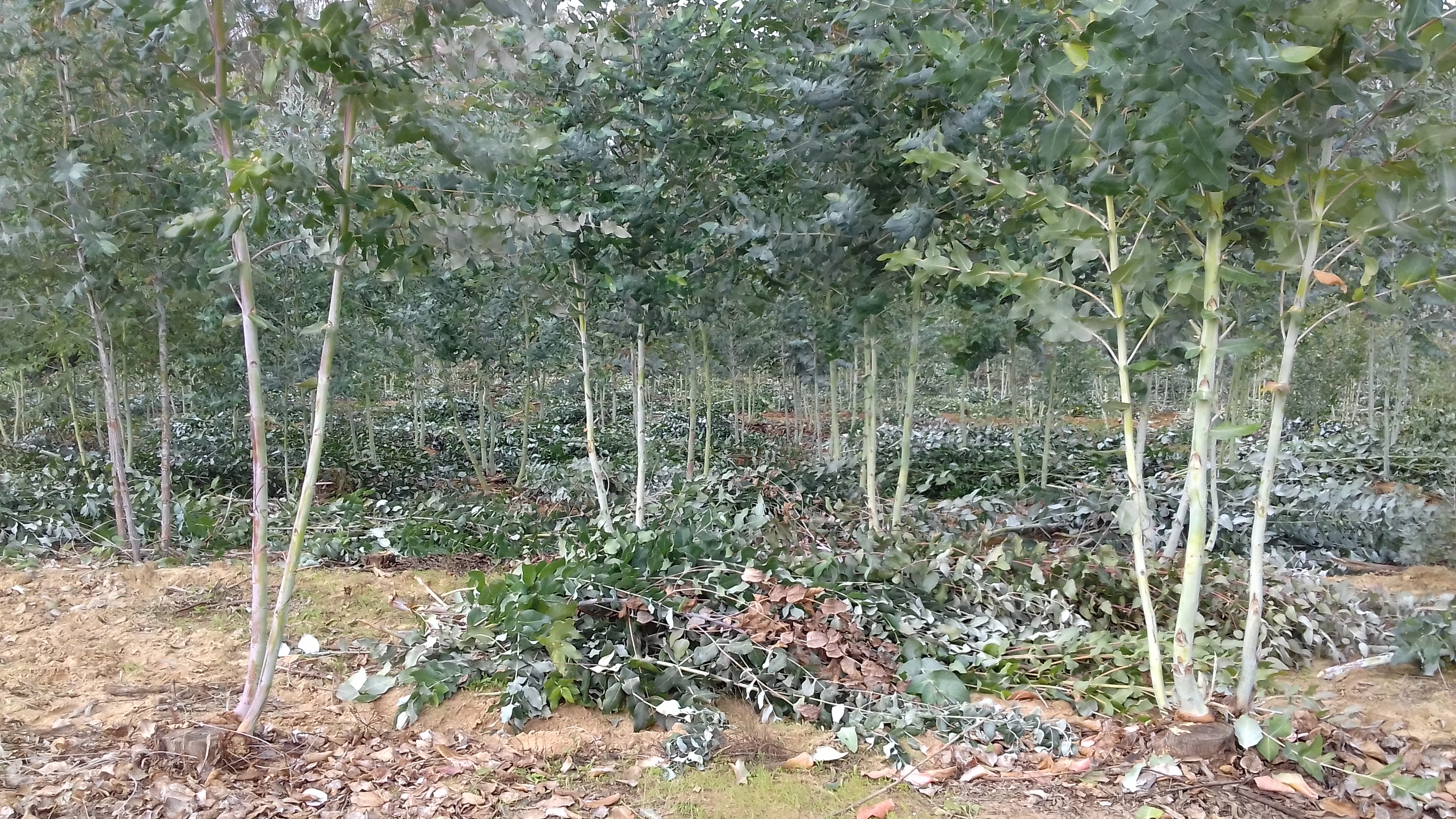
In the Doñana National Park in Andalusia, short-rotation coppice eucalyptus plantations occupy large areas and belong to private forest owners.
« Esencias Garcia-Palomo » distillery uses 5,000 kg of eucalyptus branches and leaves every day for its production of 10 to 40 kg of essential oil. Not being a forest owner, this resource is a cost to the company.
Mr. Palomo has organized with his neighbors to work in symbiosis and limit the costs of their respective operations : the collection of his raw materials contributes to the silviculture of coppices of eucalyptus.
Good quality of wood requires thinning and pruning that are costly for the forest owner. At the same time, for distillers, leaves and branches of trees are raw materials for distillation which require the availability of suitable harvesting areas. Insecure access to this resource is a reason of fragility for the company.
The samples collected by pickers also worry foresters about their possible impact on the stand, they are often accompanied by a lack of coordination, contract, remuneration. Negative experiences can block these relationships between landowners and gatherers.
Mr. Palomo has signed an agreement with his neighboring forest owners to supply 50 ha of eucalyptus coppice.
This agreement allows salaried pickers from the distillery to collect the eucalyptus leaves and branches necessary for the daily supply to be distilled. They intervene for this on the copses aged 1 year: they depress the suckers, leaving 1 to 4 strands per stem, and prune these strands. After their passage, the coppice is improved for its further growth.
This is an economic gain for both parties: the silvicultural intervention is carried out at no financial cost to the forest owners, the resource to be distilled is free for the company.
The agreement between the parties specifies the areas concerned by the harvesting authorization, the intervention periods and the harvesting techniques. It must allow continuity of supply for the distillery during its operating season, and ensure silvicultural interventions at the right stages of stand growth.
Appropriate training for harvesters in silvicultural procedures is essential to obtain quality results from these interventions.
Foliage harvest contributes to the silviculture of eucalyptus coppices. It reduces the cost for the forest owner, and for the distillery.
This synergy is based on a precise agreement between forest owners and distillers; it must include technical training for harvesters, and adapt the forest areas concerned to the needs of the distillation company.
The parameters of this agreement are specific to each type of resource collected : respective technical references must be obtained for sustainable operation that respects the resource.
This example of synergy provides interesting perspectives for achieving timber production targets that can be extended to other species. Depressing and pruning interventions are often limited by the cost of these interventions ; the possible development of buds, leaves or needles, in medicinal or cosmetic products, opens up the prospect of an economically attractive partnership.
Michèle Lagacherie, michele.lagacherie@cnpf.fr, https://occitanie.cnpf.fr/
Roser Cristóbal Cabau, roser.cristobal@ctfc.es, www.ctfc.cat
Further information
Michèle Lagacherie

Michèle Lagacherie
